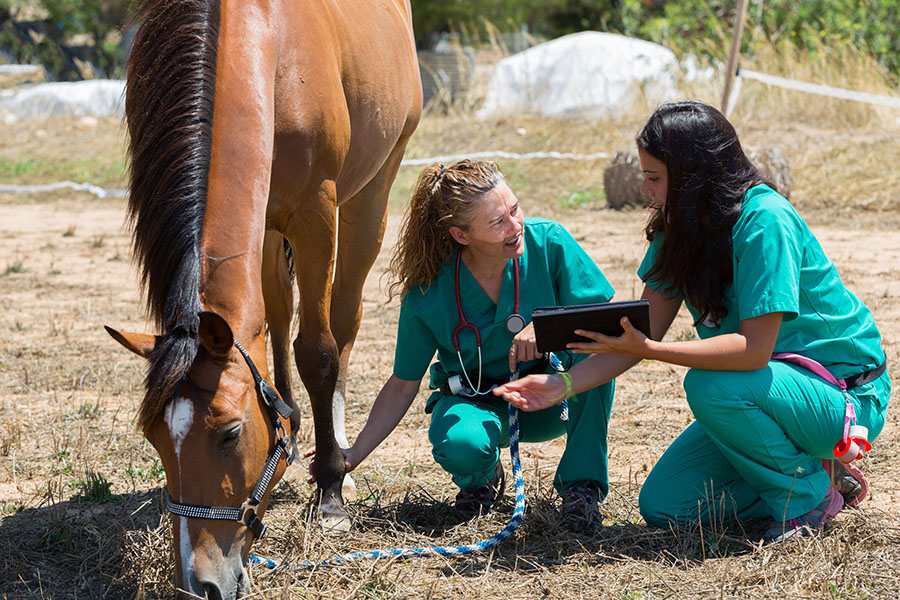The world of equine sports medicine continues to evolve with cutting-edge therapeutic technologies that address the unique physiological demands placed on performance horses. Class 4 laser therapy has emerged as a transformative treatment modality, offering non-invasive solutions for common conditions affecting horses, cattle, and other large animals.
Understanding Class 4 Laser Therapy for Large Animals
Class 4 therapeutic lasers deliver precise wavelengths of light energy that penetrate deeply into tissue, stimulating cellular processes essential for healing and recovery. Unlike lower-powered laser systems, Class 4 devices provide the energy density necessary to achieve therapeutic effects in large animal applications where tissue depth and muscle mass require more substantial power output.
The multi-wavelength approach proves particularly effective for equine applications. Different wavelengths target specific tissue depths – from superficial skin conditions to deep muscle and joint structures. This versatility makes laser therapy valuable for treating the wide range of conditions commonly seen in performance horses.
Common Applications in Equine Practice
Joint and Soft Tissue Management
Performance horses frequently develop joint stiffness, particularly in high-impact areas such as hocks, fetlocks, and stifles. Laser therapy provides targeted treatment that can help reduce inflammation and support the body’s natural healing processes without requiring systemic medications.
Tendon and ligament injuries represent some of the most challenging conditions in equine medicine. The controlled energy delivery of therapeutic lasers can help support tissue repair processes while horses maintain modified activity levels during recovery.
Post-Competition Recovery
The physical demands of competition create opportunities for laser therapy integration into routine care protocols. Many professional facilities incorporate laser treatments as part of their regular maintenance programs, addressing minor muscle tension and supporting overall tissue health.
Wound Management
Large animals often sustain wounds that require careful management to prevent complications. Laser therapy can support the wound healing process while providing a non-contact treatment option that reduces stress for sensitive animals.
Applications Beyond Horses
Cattle Operations
Large cattle operations face unique challenges in treating injuries and managing herd health. Laser therapy offers a practical solution for treating conditions such as:
- Digital dermatitis and hoof problems
- Muscle strains from handling or transport
- Post-surgical care following routine procedures
- Support for mastitis management protocols
The portability of modern laser systems makes them practical for field use, allowing treatment without the stress of transporting animals to clinical facilities.
Alpaca and Llama Care
Camelids present specific therapeutic challenges due to their stress sensitivity and unique anatomy. Laser therapy provides a quiet, non-invasive treatment option that works well with their temperament while addressing common conditions like:
- Meningeal worm complications
- Joint issues related to conformation
- Skin conditions and wound healing
- Post-shearing care
Treatment Protocols and Considerations
Professional Assessment Requirements
Effective laser therapy begins with proper diagnosis and treatment planning. Veterinary assessment ensures appropriate case selection and helps establish realistic treatment goals. Conditions requiring emergency veterinary care should always receive immediate professional attention before considering complementary therapies.
Treatment Frequency and Duration
Large animal laser therapy typically requires consistent application schedules. Most protocols involve multiple treatments over several weeks, with frequency adjusted based on the specific condition and individual response. Acute conditions may benefit from daily treatments initially, while chronic conditions often respond to maintenance schedules.
Safety Considerations
Working with large animals requires additional safety considerations beyond standard laser safety protocols. Animal restraint, handler safety, and environmental factors must be carefully managed during treatment sessions.
Research and Clinical Evidence
Current veterinary literature supports laser therapy applications across multiple species and conditions. Studies in equine medicine demonstrate measurable improvements in various parameters, though individual responses can vary significantly based on factors including condition severity, concurrent treatments, and overall health status.
Research in large animal applications continues to expand, with ongoing studies examining optimal treatment parameters for different species and conditions. This growing evidence base helps veterinarians make informed decisions about incorporating laser therapy into treatment protocols.
Integration with Traditional Veterinary Care
Laser therapy functions most effectively as part of comprehensive treatment approaches rather than as a standalone intervention. Integration with traditional veterinary care, proper nutrition, appropriate exercise modification, and other supportive measures typically produces the best outcomes.
Communication between all members of the animal care team ensures coordinated treatment approaches that maximize benefits while avoiding potential conflicts between different therapeutic modalities.
Economic Considerations for Large Operations
The economics of laser therapy vary significantly based on operation size, case volume, and existing veterinary relationships. Large operations may find value in having portable laser systems available for routine care, while smaller facilities might benefit from working with veterinary practices that offer laser therapy services.
Cost-benefit analysis should include factors beyond initial equipment investment, including training requirements, maintenance costs, and potential impacts on overall animal health management efficiency.
Future Developments
Advances in laser technology continue to improve treatment options for large animals. Developments in portability, battery life, and treatment protocols expand the practical applications of therapeutic lasers in field conditions.
Research into species-specific treatment parameters may lead to more refined protocols that optimize outcomes for different types of large animals. Understanding of how various conditions respond to different laser parameters continues to evolve through clinical experience and research.
The integration of laser therapy with other emerging technologies, such as advanced imaging and monitoring systems, may further enhance treatment precision and outcome measurement in large animal applications.
This article provides educational information about laser therapy applications in large animals. All treatment decisions should be made in consultation with qualified veterinary professionals who can assess individual cases and provide appropriate care recommendations.
About the Author: The Healix team combines extensive experience in both veterinary medicine and laser therapy technology, providing insights based on clinical application and ongoing research in therapeutic laser applications.
